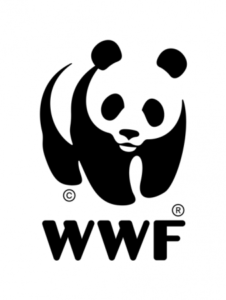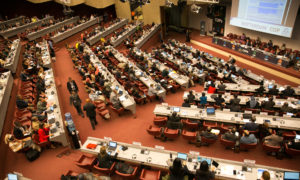Newsletter 15 Jan 2024
Environment: What’s Up in GENeva | 15 – 21 January 2024

The Geneva Environment Network’s weekly newsletter includes the latest information on the global environmental agenda, main events, job vacancies, learning opportunities, as well as other useful resources and updates. Stay tuned and follow us on X (Twitter), Facebook, LinkedIn, Instagram, and Youtube, or visit our website regularly for additional updates.
Image of the week | View of Geneva covered in snow from Quai du Seujet on Wednesday, when snow reached 15 centimeters for the first time since 2010. © UNEP/GEN, Harvey Parafina, 2024.
International Geneva and Environment @ WEF Annual Meeting 2024
This week, world leaders, business, and civil society are gathering in Davos for the 54th Annual Meeting of the World Economic Forum. Discussing priorities and challenges of the year ahead, over 100 governments and 1,000 Forum Partners, as well as civil society leaders, international organizations, experts, youth representatives, social entrepreneurs, and news outlets will reflect on this year’s theme ‘Rebuilding Trust’.
With one of the key themes of WEF 2024 being ‘A Long-Term Strategy for Climate, Nature’ and Energy, various actors for the Geneva community will be taking part in the discussions in Davos to discuss a vast range of topics. On 16 January, the House of Switzerland will host ‘Geneva Day’, promoted by the Permanent Mission of Switzerland to the UN in Geneva in collaboration with many partners, aiming to put forward the role of International Geneva in a complex world. → Discover how to follow the Annual Meeting 2024 and find a list of relevant sessions on the environmental agenda on our page International Geneva & Environment @ World Economic Forum Annual Meeting 2024.
Ahead of the annual gathering, the World Economic Forum issued last week:
- Global Risks Report 2024 | Exploring some of the most severe risks we may face over the next decade, with environmental risks ranking first in the current risks landscape and many environmental indicators in the top positions of the global risks over the short and long term list. Misinformation/disinformation is the biggest short-term risk, while the environment dominates longer-term concerns. → Read the report and a recent article by Digital Watch discussing it.
- The Global Cooperation Barometer 2024 | Written in collaboration with McKinsey & Company, the report measures the current state of global cooperation. It is meant to serve as a tool for leaders to better understand the contours of cooperation broadly and along five pillars – trade and capital flows, innovation and technology, climate and natural capital, health and wellness, and peace and security. The climate and natural capital pillar looks at the impact of cooperation on the remediation and resolution of challenges to the global climate and natural capital. It focuses on lowering emissions, preserving natural capital, and preparing for the likely impact of climate change through shared global goals that increase humanity’s ability to limit and adapt to a changing climate.
2023 Confirmed as the Warmest Year on Record
The World Meteorological Organization (WMO) has officially confirmed that 2023 is the warmest year on record. Consolidated data from six major international datasets show that:
- The annual average global temperature was 1.45 ± 0.12 °C above pre-industrial levels (1850-1900).
- The world edges ever closer toward the limits set in the Paris Agreement.
- El Niño combines with climate change to fuel heat in the latter half of 2023.
- Record heat accompanied by huge socioeconomic impacts.
- Global temperatures in every month between June and December set new monthly records.
- July and August were the two hottest months on record.
- Since the 1980s, each decade has been warmer than the previous one.
- The past nine years have been the warmest on record.
- 2024 is expected to be possibly even warmer.
WMO will issue its final State of the Global Climate 2023 report in March 2024.→ Read WMO Press Release
This week, the Intergovernmental Panel on Climate Change will meet for its 60th session (IPCC-60) in Istanbul, Türkiye. While reflecting on lessons Learned from the sixth assessment cycle, this session will be dedicated to the planning of the seventh assessment cycle. → Follow the Earth Negotiations Bulletin Live Coverage
Environmental Impact of the Ongoing Crisis in Gaza
Recent studies have shown the environmental impacts of the ongoing crisis in Gaza, sending a clear reminder that human and environmental costs should not be an afterthought in conflicts.
The ongoing crisis has caused over 23,469 casualties and damaged or destroyed about one-fifth of the structures in Gaza according to UN estimates. An investigation conducted through satellite analysis finds the fighting has damaged 18 percent of Gaza’s arable land. Besides threats of military assaults and challenges in securing water, food, and shelter, other unaccounted risks loom large on the health of the population and the environment in Gaza. The accumulation of dust, debris, rubble, and other materials coming from destroyed buildings and infrastructure are releasing toxic materials such as asbestos, which inhalation is a renowned public-health threat. → Preliminary Debris Quantification by UNEP dated 30 November 2023. The unsafe treatment of chemical material that can be commonly found in various facilities can also pose short and long-term challenges to health and the environment.
The planet-warming emissions generated during the first two months of the crisis in Gaza exceeded the annual carbon footprint of more than 20 of the world’s most climate-vulnerable nations, new research reveals. With the enormous carbon costs that come with rebuilding Gaza, David Boyd, the UN special rapporteur for human rights and the environment, highlighted:
This research helps us understand the immense magnitude of military emissions – from preparing for war, carrying out war and rebuilding after war. Armed conflict pushes humanity even closer to the precipice of climate catastrophe, and is an idiotic way to spend our shrinking carbon budget.
2024 and the Global Environmental Agenda
For those who are only back from the end-of-the-year break this week, find a first list and resources on key events for the future of our planet scheduled to take place in Geneva and around the world this year in our first Newsletter of 2024. Consult as well our updated page on the International Environmental Negotiations Agenda.
What (Else) to Read Next?
- New UN regulation will ensure durable batteries for electric vans | UNECE | 11 January 2024
Batteries fitted to electric vans will be required to be of high quality and durable over the years thanks to a proposal agreed today by UNECE’s Working Party on Pollution and Energy (GRPE). The proposal will now be submitted to the UNECE-hosted World Forum for Harmonization of Vehicle Regulations (WP.29) for adoption in June 2024. - Renewables 2023. Analysis and forecasts to 2028 | IEA | 11 January 2024
Renewables 2023 is the IEA’s primary analysis of the sector, based on current policies and market developments. It forecasts the deployment of renewable energy technologies in electricity, transport, and heat to 2028 while also exploring key challenges to the industry and identifying barriers to faster growth.
- Chemicals Used in Plastic Materials: An Estimate of the Attributable Disease Burden and Costs in the United States | Leonardo Trasande, Roopa Krithivasan, Kevin Park, et al. | Journal of the Endocrine Society | 11 January 2024
Plastics contribute substantially to disease and associated social costs in the United States, accounting for 1.22% of the gross domestic product. The costs of plastic pollution will continue to accumulate as long as exposures continue at current levels. Actions through the Global Plastics Treaty and other policy initiatives will reduce these costs in proportion to the actual reductions in chemical exposures achieved. - High demand for energy-related critical minerals creates supply chain pressures | Monia Snoussi-Mimouni, Sandra Avérous | WTO Blog | 10 January 2024
Critical minerals, such as cobalt, copper, lithium, nickel, and rare earths, play a crucial role in the production of clean energy technologies, from wind turbines to electric cars. Over the past 20 years, annual trade in energy-related critical minerals has increased from US$ 53 billion to US$ 378 billion. However, the high demand for clean technology goods is putting pressure on the supply chains for these minerals. - COP28 just about put food systems on the climate agenda. Now we build | African Arguments | 10 January 2024
Though the talks’ long overdue focus on food and agriculture ultimately disappointed, it provides a starting point for future action and advocacy.
- Millions of plastic pellets wash up on Spanish shore | Reuters | 8 January 2024
Hundreds of volunteers sifted through sandy beaches with colanders and shovels on Monday in Spain’s northwestern Galicia region after millions of plastic pellets washed up on its coast, triggering environmental concerns and a political blame game.
- Environment and energy cases to watch this year | POLITICO | 8 January 2024
Key legal fights in 2024 could shake up how the government responds to a changing climate for years to come.
- Exposure to endocrine disrupting chemicals from beverage packaging materials and risk assessment for consumers | Journal of Hazardous Materials | January 2024
Findings suggest that BPA exposure poses a potential health hazard for individuals who regularly consume non-alcoholic beverages packaged in aluminium or tin cans, particularly young children.
Events
See all

Conference
International Geneva & Environment @ World Economic Forum Annual Meeting 2024
15 – 19 Jan 2024
Davos & Online
WEF

Body Meeting
Meeting of the SERCOM SC-DRR Expert Team on Early Warning Services
15 – 17 Jan 2024
WMO Headquarters
WMO

Body Meeting
Informal Open-ended Negotiating Group on Rules | Fisheries Subsidies
15 Jan 2024
WTO | Room W
WTO
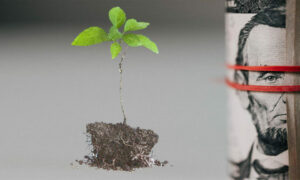
Conference
La finance durable est-elle une utopie ?
15 Jan 2024 12:15
Club Suisse de la Presse & Online | Zoom
Geneva Press Club

Virtual
Community of Practice on Environment, Climate, Conflict, and Peace Debrief on Peace @ COP28
15 Jan 2024 16:00
Online | Zoom
Geneva Peacebuilding Platform

Conference
Health and Pollution Action Plan (HPAP). Example of inclusive and sustainable multilateral actions to improve health outcomes by addressing pollution related diseases
16 Jan 2024 11:45 – 13:45
Campus Biotech
UNIGE

Virtual
Community of Practice on Environment, Climate, Conflict, and Peace | January Monthly Meeting
16 Jan 2024 14:00
Online | Zoom
Geneva Peacebuilding Platform

Body Meeting
6th Meeting of the Hydrological Coordination Panel (HCP-6)
17 – 19 Jan 2024
WMO Headquarter & Online
WMO

Consultation
Second External Review of the IPBES Transformative Change Assessment | Online Dialogue with Stakeholders
17 Jan 2024 09:30 – 18:00
Online
IPBES

Virtual
Explain it to me! On the use of explainable machine learning for the agricultural and environmental sciences
17 Jan 2024 17:00 – 18:15
Online | AI for Good Neural Network
ITU

Body Meeting
7th Meeting of the Standing Committee on Disaster Risk Reduction and Public Services (SC-DRR-7)
18 – 20 Jan 2024
WMO Headquarter
WMO

Workshop
The role of AI in tackling climate change and its impacts: from science to early warning
19 Jan 2024 11:00 – 17:00
Online | AI for Good Neural Network
ITU
Jobs
See all

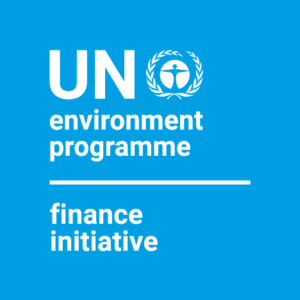

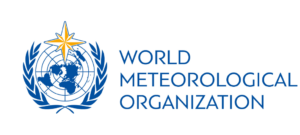




Consultant
Net Zero Banking Alliance (NZBA) Operations and Communications Assistant
18 Jan 2024
UNEP FI





Professional
UN Special Rapporteur on the promotion and protection of human rights in the context of climate change
19 Jan 2024
Special Procedures of the UN Human Rights Council





Intern
Stagiaire en gestion de projet et communication environnementale à 80%
21 Jan 2024
J'aime ma Planète

